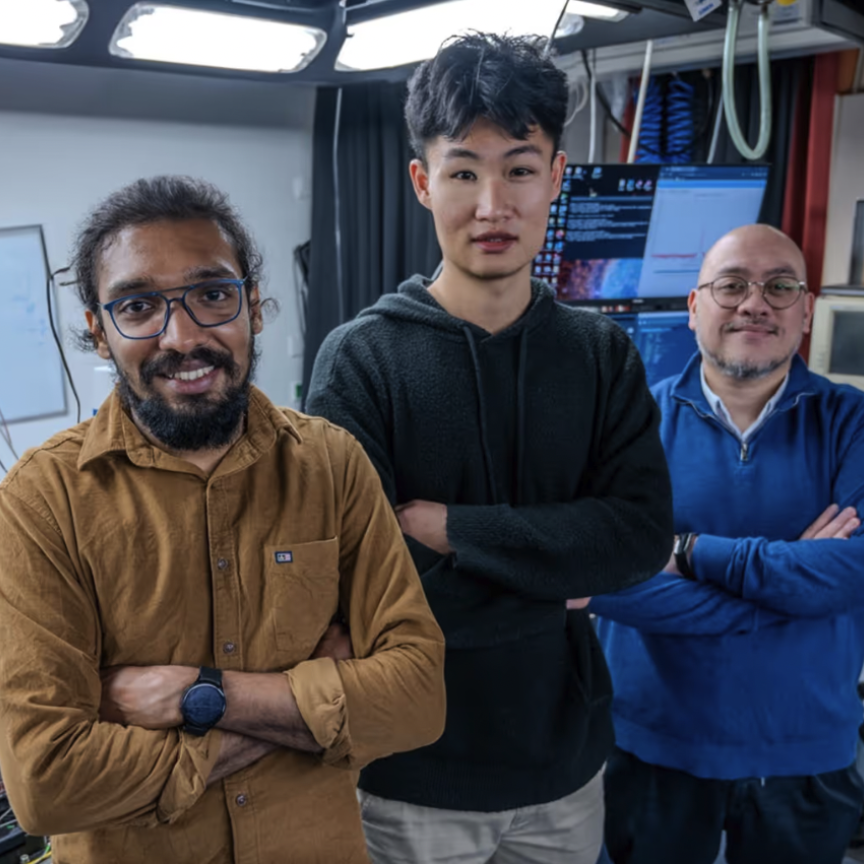A thousand-robot ‘flash mob’ capable of assembling into almost any shape on command has been developed by researchers at Harvard University in the United States. The individual robots use infrared light to simultaneously arrange themselves into predetermined shapes, demonstrating the huge potential that distributed robotics could have in the future for applications such as disaster management and driverless cars.
The self-organising swarm, described in today’s edition of Science, consists of 1,027 robots that measure just a few centimetres across and stand on three pin-like legs. Instead of one highly-complex robot, many robots collaborate, providing a simple platform for the enactment of complex behaviours. Just as trillions of individual cells can assemble into an intelligent organism, or a colony of ants can link to form bridges to cross water, the robots demonstrate how complexity can arise from very simple behaviours performed en masse.
To create the desired shape, four robots are used to mark the origin of a coordinate system for the other thousand-odd machines. These robots receive a two-dimensional image of the shape they need to assemble into, and then the robots use an infrared transmitter and receiver present on each machine to ‘communicate’ to each other and travel autonomously. In this way, the robots can fire infrared beams and detect those that are reflected off neighbouring machines. By measuring the brightness of the reflectance, the robot can calculate its proximity to its neighbours, and the robots can take turns to travel to their desired positions.

Image 1: Given a two-dimensional image, the robots form the same shape. Photo courtesy of Mike Rubenstein and Science/AAAS
The robots are also capable of correcting mistakes in their travel path. If a traffic jam forms or a robot moves off-course, nearby robots sense the problem and cooperate to fix it.
To keep the cost of the Kilobot down, each robot moves using two vibrating motors that allow it to slide across a surface on its rigid legs. However, the simple design does have certain drawbacks. ‘These robots are much simpler than many conventional robots, and as a result, their abilities are more variable and less reliable,’ said lead author Michael Rubenstein, a research associate at Harvard SEAS and the Wyss Institute. ‘For example, the Kilobots have trouble moving in a straight line, and the accuracy of distance sensing can vary from robot to robot.’
Yet, at scale, the smart algorithm overcomes these individual limitations and guarantees − both physically and mathematically − that the robots can complete a human-specified task, in this case assembling into a particular shape. This is an important demonstration for the future of distributed robotics, according to Radhika Nagpal, a Core Faculty member at the Wyss Institute for Biologically Inspired Engineering at Harvard University, and co-leader of the Bioinspired Robotics Platform.
The research was a big step in proving the concept of distributed robotics, which in the future, could play a part in many applications to help human life, Nagpal: ‘Increasingly, we're going to see large numbers of robots working together, whether its hundreds of robots cooperating to achieve environmental cleanup or a quick disaster response, or millions of self-driving cars on our highways,’ she said. ‘Understanding how to design “good” systems at that scale will be critical.’
Further Information


